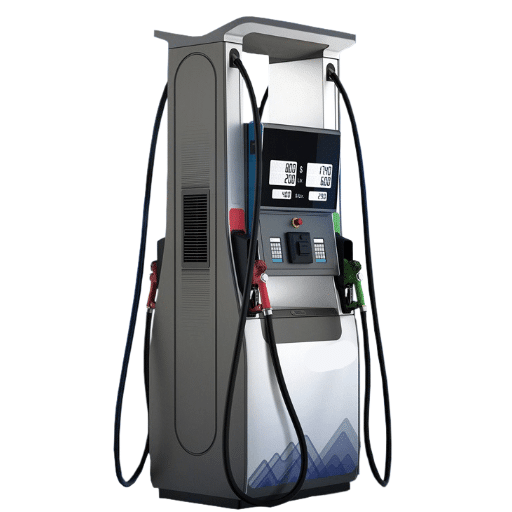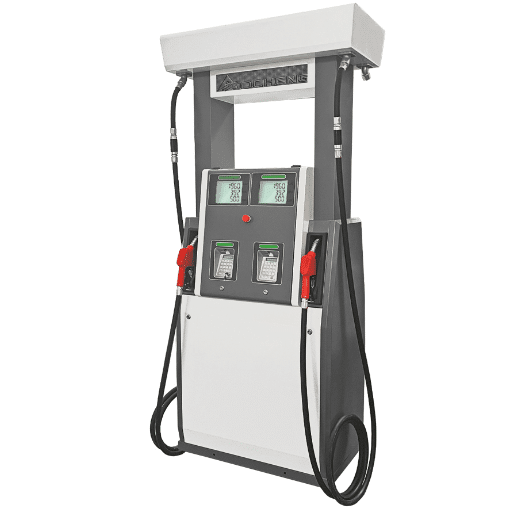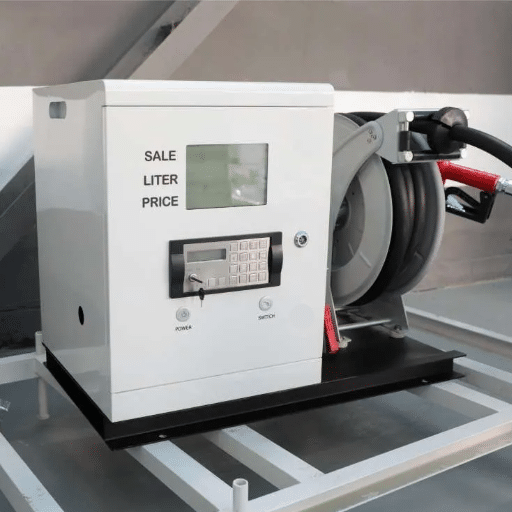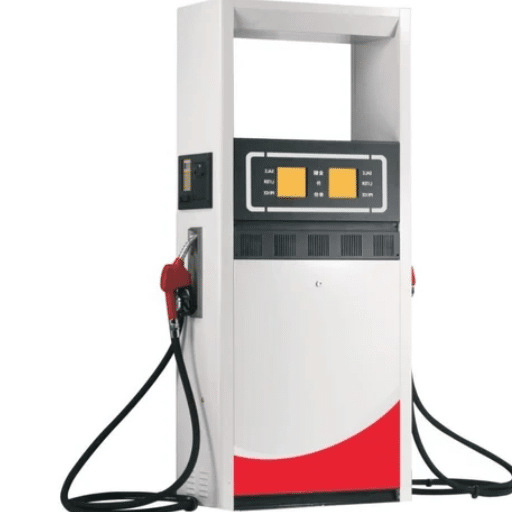The heart of the current fuel distribution station fuel dispensers is ensuring the efficient and reliable fueling of millions of vehicles each day. The high-tech systems ensure accurate quantity checks and safety measures, along with an endurance challenge that tests the mightiness of the petroleum retail industry. As one goes through the course of the article on research dynamics, one encounters mechanistic perspectives that provide insights into how fuel dispensers can become quite a valuable asset for gas stations across the globe. This comprehensive outline intends to engage owners in optimizing their modification procedures, as well as to engage the initiative professional in suggesting the mechanism that runs these systems to impact an uninterrupted fuel supply.
Overview of Fuel Dispenser Machines

Fuel dispenser machines are very important contraptions that are used to facilitate the transfer of fuel from storage tanks into vehicles in gas stations. They come into existence with two main parts: the metering system, serving to provide an accountable measure of fuel dispensed, and the delivery system, where the fuel flow to the vehicle is monitored and its speed is measured. Modern fuel dispensers come with a digital display that provides clear information to the user and can be integrated perfectly with your payment model for added convenience. They are designed to adhere to strict regulations for both personal and environmental safety, and thus foster safe and efficient refueling in a handful of operational setups.
What is a Fuel Dispenser Machine?
A fuel dispenser is a special machine that can transfer liquid fuel like gasoline, diesel, and kerosene from a storage tank to a vehicle’s fuel tank or some type of container. The main components include the pump that withdraws the fuel from a storage tank; a metering system for measuring the right phase of fuel and achieving a precise measurement; and a delivery nozzle that regulates the flow. Modern dispensers also come fitted with state-of-the-art conveniences, like real-time fuel display, seamless payment integration, and dependable safety devices that can prevent or address any leakage or spillage. These machines are fabricated to comply with industry-required stand-alone standards, which ensure reasons for operation, accuracy, and ecological protection.
Components of a Fuel Dispenser
A fuel dispenser is constituted of a variety of basic components that ensure both consistent performance and safety compliance. These systems include:
Hydraulic Unit
This unit is tasked with handling fuel storage as well as driving it from the underground tank to the ‘nozzle.’ It is comprised of the mechanisms that supply and measure pressure via low-pressure centrifugal pumps, valves, and meters. The pumps are needed to shift the fuel under pressure, while the direction and the metered quantity are controlled by flow control valves. The meters are expected to measure the amount of fuel moved with great precision for more precise dispensing.
Electronics and Display Unit
Modern fuel dispensers use advanced electronics that incorporate microprocessors and sensors to collect real-time information about the quantity of fuel and filling cost, etc., and communicate this data to the display for the user to interact. Calibration to the strictest standards is achieved.
The nozzle became the inlet for the passage of the fuel, designed with the appropriate safety mechanisms such as self-shutdown to prevent any spillages or any wasted fuel from overfills. These extremely tough, high-pressure-resistant hoses are connected to the dispenser to withstand the pressure of fuel and other hazardous chemicals.
Payment and Control Systems
A myriad of payment methods can be supported by the implementation of integrated solutions. Credit card readers are favored and accepted at payment lanes of all retail services. The application of contactless payment technologies or smart cards also supports the cashless payment option. Control systems do not simply communicate information about the product, but are used for price updating as well as company management purposes.
Safety Features
To minimize environmental damage and safety demands, leading safety mechanisms such as vapor recovery systems, explosion-proof, and anti-drain valves are integrated by stations during dispensing.
These are going to ensure smooth-added service to the customers in seeing the functioning of the dispenser most effectively and efficiently.
Types of Fuel Dispensers: Petrol and Diesel
Fuel dispensers meant for petrol and diesel have been distinctly designed so that they may cater to vehicle refueling with reference to their nature of fuel utilization. These fuel dispensers are constructed on nearly the same lines, though calibration and actual construction are almost always grappled with in terms of fuel peculiarities.
Petrol Dispensers
Petrol dispensers are designed to transfer and deliver very volatile and highly flammable gasoline safely and efficiently. The components are designed with such high-tech niches as flow meters, which can accurately measure volume, the pressure regulators that regulate pressure to keep a constant flow rate, and hoses or nozzles that have been specifically developed in such a manner that is able to minimize fuel vapor emissions. Recent fuel dispensers are designed to incorporate an evaporation recovery system that collects fuel that would have otherwise evaporated to reduce environmental-related damage and meet emission standards.
Diesel Dispensers
Diesel dispensers are designed to tolerate a heavier, less volatile fuel than petrol. They generally work with less vapor recovery because diesel, with a lower evaporation rate in comparison to petrol, cannot allow for effective usage of recovery mechanisms. Diesel dispensers work over built systems handling higher volumetric flow rates, making them best suited for commercial vehicular applications and trucks requiring more volume. Added durability in their design is there to withstand abrasion from the high viscosity of diesel fuel, ensuring an uninterrupted engine life.
Despite having sophisticated management systems, such as in-flow and flow analysis, inventory management, and billing for both categories of dispensers, disparities in dispensers’ design and configuration ensure that the safe and reliable operation and observation by the regulatory authority meet requirements regarding the type of fuels dispensed.
| Feature | Petrol Dispensers | Diesel Dispensers |
|---|---|---|
| Fuel Type | Highly volatile and flammable gasoline | Heavier, less volatile fuel |
| Vapor Recovery | Essential – includes evaporation recovery system | Less required due to lower evaporation rate |
| Flow Rate | Standard flow rate for passenger vehicles | Higher volumetric flow rates for commercial vehicles |
| Durability | Standard durability requirements | Enhanced durability to withstand high viscosity |
| Primary Users | Passenger vehicles and light-duty vehicles | Commercial vehicles, trucks, and heavy machinery |
| Emissions Control | High priority due to vapor emissions | Lower priority for vapor control |
Functionality and Operation
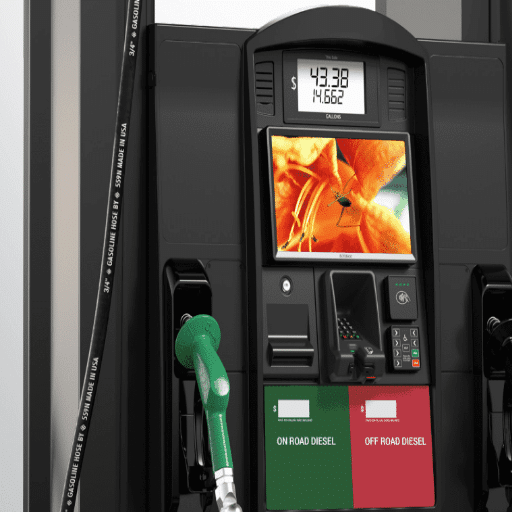
Fuel dispensers pump petrol out of underground tanks via a cascade of valves and filters, thereby ensuring the uniform flow rate at all times while keeping contamination to a minimum. Fuel flow, speed, and quantity are all monitored and are mostly reported accurately as inventory for any transactional purposes, with the use of sophisticated electronic sensors. Ergonomics is addressed and thus accomplished through professional user-machine interfaces, comprising selectors (keypads, touch screens), displays, and communications tables (networks, parallel cards inside the dispenser). Such features as automatic shut-off are constituents of security. The dispenser’s impeccable functioning, peaking result with peak results in prolonged service months, has been provided to meet and eventually exceed limits on what terrain and operational activities the equipment may face.
How Fuel Dispensers Work
For all their diversified systems managing storage, measurement, and delivery of fuel, fuel dispensers lean on one beyond recall: the submersible pump. Starting operations at the underground storage tank, fuel is drawn out with the assistance of pipelines by the submersible pump. The fuel is then channeled to the meter: an accuracy enforcer devised to measure the exact volume of fuel leaving, and is calibrated to measure the gasoline drop by drop. Furthermore, the more advanced flow meters account for variables, regardless of temperature or flow rate, to ensure precision in the customary measure.
The nozzle will then automatically shut seeing when the tank capacity/measure is in Sufficiency. With its integrated electric control unit (ECU), the system centrally receives and processes signals from various connected sensors and delivers on the display interface a real-time prompt of each driver on the dispensation of the volume of fuel, cost, etc. Redemptive measures have been set in place for the safekeeping of the environment through compromises in a vapor recovery system. Therefore, a safe evacuation and storage of fumes leads them sidewardly for innovate and maintain integrity in the fuel trade.
Added to a payment medium, transactions are very fast and secure. In all, all the elements do not get interfered with, making a healthy, safe, and efficient commercial activity, thus contributing to the furthering of compliance-related to regulatory standards and operational minutiae.
Importance of Nozzles in Fuel Dispensing
The fueling nozzle is a major part of ensuring the fueling process is safe, efficient, and well coordinated when sending fuel from its storage arrangement to the respective vehicle or machine. The installer adjusts the flow of fuel precisely and sets up the automatic shut-off, so the nozzle will avoid any overflow or spillage and abide by all environmental and safety standards. These nozzles also resist various fuels such as gasoline, diesel, ethanol blends, and biodiesel, thereby allowing for the persistence of performance in variability. Modern designs have, on top of ergonomically optimized designs catering to operator comfort, started getting into vapor recovery, which contains harmful emissions in alignment with tight regulations. Close nozzle stature and reliability, aimed at preserving energy, minimizing environmental impacts, and enhancing fuel management processes, would partner well with an accurate and opinionated school of thought on the construction and start-up tasks.
Automatic vs Manual Fuel Dispensing
Automatic Fuel Dispensing
The sophistication and mechanization of fuel pumps using sensors by technological advancements guarantee a precise amount of fuel with much less human intervention. A direct advantage to this is that the given system allows for faster refueling, prevents spills through auto shutoff, and regulates accurate quantification. Reliable high-volume dispensing is seen at large-volume filling stations or even fleet refueling systems, where consistency is a paramount factor. Such dispensers also coexist with managerial software in such a way as to provide real-time data over inventory, purchase logs, and facility scheduling.
Manual Fuel Dispensing
Rather, manual dispensing of fuel heavily leans on human input and control. On the one hand, a multispeed approach to implementation and maintenance dimensions criminalizes automated mechanisms for their susceptibility to human error and waste of feeds, in the process. Such a mode can be likely suitable for small-scale feeding purposes, realizing that automation finds efficiency and scalability as a handicap against manual dispensation, in the end. In all, the choice between automatic and manual depends clearly on the manpower level of the task, for instance, as to fuel replenishments, how extensive feels on the fuel pump feels, or budgetary constraints that favor automatic systems owing to modern efficiency and environmental standards.
Choosing the Right Fuel Dispenser
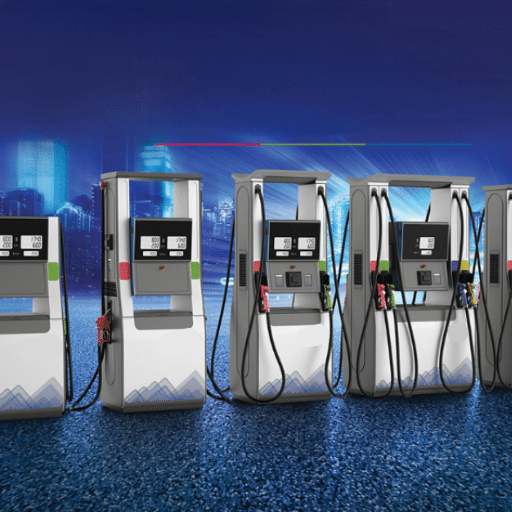
When selecting an appropriate dispenser, major factors to be placed into consideration include the size of operation, fuel volume requirement, and budget. For high fuel volume and efficient operations, automatic dispensers provide an increased level of responsiveness, reduced errors, and a higher green rating. Alternatively, it can be quite good to go for manual options for small obsessions with meager fueling demands and lower initial capital costs. Look for how strong its structure is, its simplicity in terms of maintenance, and whether or not the product is suitable for your operation in realizing long-term reliability and performance. The best fuel systems only come with the highest health and safety standards to eradicate the potential troubles during operation.
Factors to Consider for Petrol and Diesel Dispensers
The main factors that need to be considered when getting gasoline and fuel dispensers include efficiency, adherence, and durability.
- Flow Rate Requirements: Choose the meter with the appropriate flow rate that would fulfill your operational requirements. A large fleet engaged in high daily turnovers therefore greatly requires dispensers with high flow rates, typically in the range of 40 to approximately 130 liters per minute. Low flow rates might be enough for the smaller establishments, resulting in reduced energy consumption, optimality, and reduced costs.
- Accuracy and Calibration: Ensure that their meters are precise and that calibration occurs on an irregular basis. No one is happy when a dispenser reads 1 gallon and delivers 0.90: this disgraces the dealer and upsets the customer. Additionally, fair (adult) meters prevent a lot of nonsense, including chargebacks and regulatory problems.
- Durability and Material Composition: The dispenser should be made using materials built to remain strong, withstand exposure to harsh conditions, and withstand the most vulnerable use. Examples of corrosive resistance include steel and heavy-duty polymers.
- Quality of Health and Safety and Compliance: It is important that dispensers fulfil local regulations established for health, safety, and the environment. So, ATEX-compliant dispensers are completely safe and “liability-friendly”.
- Integration and Automation Options: Having digital computers is often now incorporated into filling stations and gas guns to give way for disposition with competition. Sounds like software. This link will therefore help in further monitoring, inventory maintenance, and further inclining towards cupidity, for the customer.
- Ease of Maintenance; Availability of Spare Parts: The unavailability of some parts or parts that might be expensive might be the main problem consumers face when it comes to maintenance. The system must provide a wide range of spares onsite and spare parts for basic and less technical issues so that a technician can fix them to maintain the performance.
Under careful evaluation of these parameters, the operators can optimally fine-tune their fueling operations to balance cost efficiency against safety performance under extant regulations. Always inquire with certified suppliers to know the applicability of dispensers with your particular case and regional setting.
Evaluating Fuel Dispenser Suppliers
While reckoning the criteria, it is pertinent to consider what is evaluated to be able to bring about sustainability, efficacy, and consistency with the operating constraints over an extended period:
- Standards Compatibility and Certification: Confirm that dispensers from the supplier meet the safety standards globally and internationally, like UL and ATEX groups, and adhere to environmental regulations. Certifications not only give assurance of quality and safety but also guarantee proper operation and compliance with the law of the equipment marketed.
- Product Range and Possibility for Customization: Consider what types of products are available and what customization they enable. Seek dispensers with varied flows, compatibility with different fuels, including biofuels, and other alternative fuels, and that are designed to be scalable to the needs of specific stations.
- Technology and Upgradeability: Present-day dispensers have become advanced and incorporated with technology such as payment systems, satellite connectivity for remote surveillance, and some unique user interference. Get assurance from a given dealer on the ease of enhancements and upgrades on software in the future as to save one from encountering obsolescence.
- Reputation and Support Network: Look for customer feedback, case studies, and supplier reputation within the industry. A well-known supplier with a strong support network and worldwide presence would guarantee the rapid provision of technical service and spare parts, as well as minimize downtime.
- Cost and Warranty: Which companies have the best total cost possibilities, warranty conditions, and maintenance for these units? Those suppliers that spell out their costs honestly and perhaps offer longer warranties thereby indicate confidence in their product quality.
So, the following factors will help the operator to choose wisely, ensuring that the dealer meets all operational and regulatory needs and, at the same time, offering long-lasting and flexible solutions to face the emerging demands of the market.
Good Quality and Reliable Equipment
Three aspects are certain: the much-needed quality equipment and reliability.
Material and Quality
In the service of quality, the construction of long-lasting tools can only happen with high-quality materials like stainless steel, aluminum, or facsimiles that place them above wear degradation, and these are in the hands of operation. Check out quality and compliance with internationally recognized manufacturing standards and certifications such as ISO and CE marks.
Performance and Efficiency
Performance or output is concerned with the technical systems constituting the character of the working speed, utilization of energy, and positional accuracy. Independent performance studies or reviews give a good indication of how well the equipment has performed in the real world.
Supplier Support and Maintenance
Supplier support has maximum emphasis, because, along with maintenance, it forms a step towards optimization. Operators also need to partner with such manufacturers who provide a wide range of technical support, easy access to parts, and maintenance schedules. The very broadening of warranties complements fast-response registers in case of an immediate fault.
There is a need to carefully assess these issues to ensure that the equipment serves various functions of dependability as well as long-term investment.
Fuel Dispensing Technologies
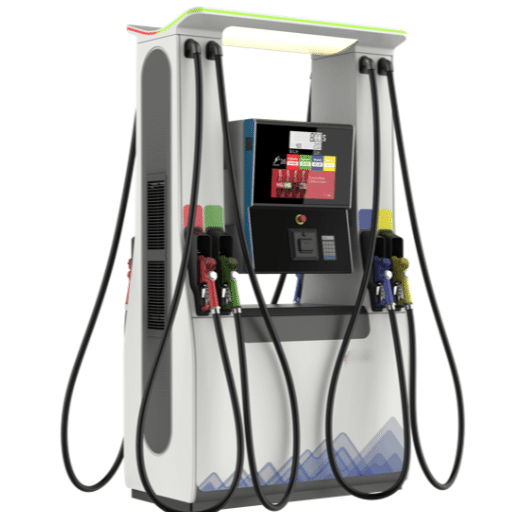
Fuel-dispensing technologies are developed for a more efficient and faster transfer of fuel from storage to vehicles or equipment. Modern technologies are generally coupled with electronic meters for precise flow measurement, digital interfaces, and automated controls to avoid spillage and enhance safety. More sophisticated models might further incorporate vapor recovery systems, ensuring a minimum consequent environmental impact. The owner’s wishes should address the choice of technology as predicated on the factors of fuel type, volume requirements, and compatibility with the existing infrastructure. The best bets shall certainly be those that maintain accuracy from which to regulate the operations and obey the regulatory standards.
Innovations in Fuel Dispensers
It is efficient for fuel dispensers to develop in the technological context, thus encouraging accuracy and sustainability. Molding dispensers have incorporated the best in electronic metering systems today, creating a less complex, delineated mechanism for this component to provide consistent attributes. Expanding the payment processes through a method that includes near-field technology allows contactless transactions and further enhances customers’ convenience. Bio vapor recovery has also come in response to environmental protection, systematizing vapor encapsulation and the release of these fuels outside the fluid path, which then finally closes the process for release into the atmosphere. Smart dispensers, therefore, allow for easy integration of IoT digital structure with the ability for real monitoring, predictive maintenance, and consequent integration with fleet management systems. In the larger picture, this industry changes to focus on safety, compliance, and environmental stewardship.
Mobile Fuel Dispenser Solutions
One of the uses of mobile-fuel-dispensers of mobile fuel dispensers in big investment-activating fields that companies like sects trade in (for example, in construction, agriculture, and logistics) is fast refilling at the site to keep machines and engines working. A mobile-fuel-dispenser model typically consists of a main integrated tank, a fitting pump responsible for pumping, and a metering unit to enable flow metering of any trip.
Mobile fuel dispensers end downtime. More so when there is a fuel shortage, so to work, machines now do not have to travel long distances to fueling sheds and return for fuel. They do need trained cables and, of course, good engine operators to use with numerous capabilities like automation and cordless meters to destroy spurious claims and off-pocket expenditure, GPS units (whenever switched on) to determine out-of-scope instances, and a variety of international certificates for implementation in stringent safety and environmental results managers.
Businesses that need cost-friendly fuel dispensation can get that from mobile fuel dispensers. It is modifiable to their facility requirements. Consequently, the entire fueling process is more streamlined, thus making the workflow uninterrupted.
Smart Technologies in Fuel Pump Machines
Modern era fuel dispensing equipment has precise fuel metering systems to ensure exact dispensation, which is very important in slashing the costly errors and guarantees the operation still abides by prevailing regulatory norms. These systems also provide detailed transaction logs, making the pump station attendant or business owner perfectly accountable for the report and consequently enabling businesses to study their fuel consumption trends. While taking in newer smart technologies, there is a whole new world of fuel pump automata that can remodel those dumb machines into intelligent hubs and hence transform their owners’ operational difficulties into new benchmarks in the arenas of operational excellence and a strong appeal for customer satisfaction.
| Technology Feature | Benefits | Application |
|---|---|---|
| Electronic Metering Systems | Precise measurement, reduced errors | All fuel dispensing operations |
| Contactless Payment (NFC) | Faster transactions, enhanced convenience | Retail fuel stations |
| Vapor Recovery Systems | Environmental protection, emissions reduction | Petrol dispensers |
| IoT Integration | Real-time monitoring, predictive maintenance | Smart fuel stations |
| GPS Tracking | Location monitoring, theft prevention | Mobile fuel dispensers |
| Automated Controls | Reduced human error, improved safety | High-volume operations |
| Digital Display Units | Clear information, user-friendly interface | All modern dispensers |
The Future of Fuel Dispensing
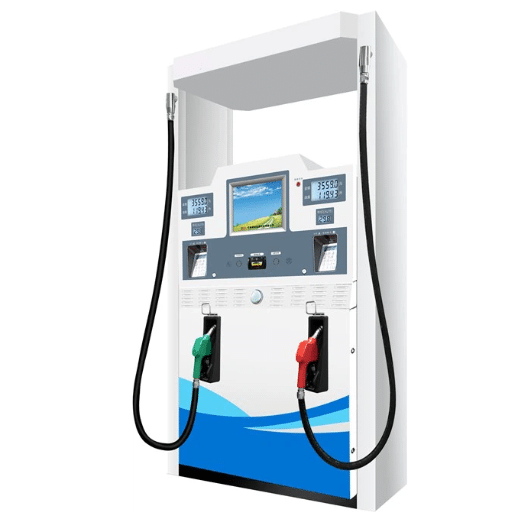
The future of fuel dispensing revolves around automation, sustainability, and enhanced customer service. Automated with AI can streamline operations and bring about some level of accuracy while anticipating maintenance. On the other hand, sustainable energy solutions like an electric vehicle (EV) charging station integrated with fueling networks are being seen to have growing relevance in the reduction of ecological harm. Also vital are digital payment options and a personalized service interface to make the transaction process smoother and efficient. This combination can thus cater to the increasing demand for eco-friendly and user-centric fuel dispensing.
Trends in Fuel Dispenser Technology
The technology fuel dispenser has significantly evolved, which drove the convergence from smaller to larger revised areas, taking advantage of new elements such as digital systems, cleaner fuels for sustaining, and a little touch of user-centred design. One major advantage will obviously be seen in IoT as the new form of energy in this industry for real-time monitoring, predictions for maintenance, and data analytics to improve operational efficiency and minimize downtime. Also in survey work, we understand that multi-energy dispensers have now broken up into possibly dual-energy fill stations, allowing for the traditional acknowledging primary energy to include such cleaner alternatives like full EV charging and hydrogen refueling, relying on the existing full-scale desire for sustainable energy adoption.
Emphasizing technology whilst rarely emphasizing distinction serves toward swift, secure, and highly convenient transactions. AI-based digital interfaces provide a highly customized approach to promotions and loyalty programs, making for better customer experiences. These steps not only appease customer expectations steadily but also relieve regulatory pressures in preference for connected and green fuel automation systems that are more efficient overall.
Impact of Electric Vehicles on Fuel Stations
Industry Transformation: The rise in electric vehicles has had a great impact on the fuel stations’ traditional model. In my view, this transition requires the evolution of ways in which fuel stations can incorporate EV charging interests. This transition involves a reassessment of the space given to fuel, considering the greater dwell time of EVs, integration of renewable energy systems to power EV chargers, and others. Along with these, operations need to adapt to suit this new diversification. Otherwise, in a smooth transition, both types of customers can receive service. Such an adaptation is essential to keep up with the needs of the market of tomorrow, as well as a sustained, long-term business.
Adapting to Changing Consumer Needs in Fuel Delivery
The fuel supply industry is entering a period of revolutionary change owing to the rising demand for technologically advanced, clean, and convenient service consumption by consumers. Customers are now wanting a clean and environmentally sustainable service, propelled by the quest to strike the right chord with the eco-warrior sleepers worldwide. That is why fuel suppliers are now engaging in making available on-tap deliveries via cellphone applications, which do make the circuit beneficial with the support of smooth-sailing ordering, payment, and delivery monitoring systems. Also, an open focus has been on green alternatives like biodiesel and renewable fuels for the noble cause of complying with environmental targets and regulations.
Market innovators implement data analytics to predict the trends of demand and optimize routes, reducing costs and CO2 production. Electric vehicles have further differentiated services, and a group of operators is now installing EV charging units to improve their working infrastructure. These new impacts point to the pervasive recurring theme in open business enterprises – that of nimble and consumer-centric operations that accommodate different forms of living while adhering to the requirements of laws and best sustainability practices. The forerunners shall build upon these changes to cultivate long-term customer loyalty and remain relevant in a competitive environment.
| Future Trend | Description | Expected Impact |
|---|---|---|
| AI-Powered Automation | Artificial intelligence for operations and maintenance prediction | Increased accuracy, reduced downtime, streamlined operations |
| EV Charging Integration | Hybrid stations offering both fuel and electric charging | Diversified revenue streams, future-proof infrastructure |
| Hydrogen Refueling | Alternative fuel options for hydrogen-powered vehicles | Support for clean energy transition |
| Mobile App Integration | Smartphone apps for ordering, payment, and delivery monitoring | Enhanced customer convenience and satisfaction |
| Data Analytics | Predictive analysis for demand trends and route optimization | Cost reduction, improved efficiency, lower CO2 emissions |
| Renewable Energy Systems | Solar panels and renewable power for station operations | Reduced environmental footprint, operational cost savings |
| Personalized Services | AI-based loyalty programs and customized promotions | Improved customer retention and engagement |
| Multi-Energy Dispensers | Single units dispensing multiple fuel types and energy sources | Space optimization, operational flexibility |
Key Takeaways
- Fuel dispensers are critical infrastructure components that ensure safe, accurate, and efficient fuel transfer from storage tanks to vehicles.
- Modern dispensers integrate advanced technologies including electronic metering, digital displays, automated controls, and payment systems for optimal performance.
- Petrol and diesel dispensers have distinct designs tailored to the specific characteristics of each fuel type, with different requirements for vapor recovery and flow rates.
- Key selection factors include flow rate requirements, accuracy and calibration, durability, safety compliance, integration capabilities, and maintenance considerations.
- Emerging technologies such as IoT integration, contactless payments, vapor recovery systems, and smart monitoring are transforming the fuel dispensing industry.
- The future of fuel dispensing involves adaptation to electric vehicles, hydrogen refueling, mobile solutions, and AI-powered automation for enhanced sustainability and customer service.
- Proper evaluation of suppliers based on certifications, product range, technology upgradeability, reputation, and warranty terms is essential for long-term success.
- The industry is moving toward multi-energy solutions that accommodate traditional fuels, biofuels, electric charging, and alternative energy sources to meet diverse consumer needs.
Conclusion
The fuel dispensing industry stands at a pivotal moment of transformation, balancing traditional petroleum distribution with emerging clean energy solutions. As technology continues to advance, fuel dispensers are evolving from simple mechanical devices into sophisticated, intelligent systems that prioritize safety, accuracy, environmental protection, and customer convenience. Whether you’re a gas station owner, fleet manager, or industry professional, understanding the components, technologies, and future trends in fuel dispensing is essential for making informed decisions that will ensure operational efficiency, regulatory compliance, and long-term sustainability.
By carefully evaluating your specific needs, selecting quality equipment from reputable suppliers, and staying informed about technological innovations, you can position your fuel dispensing operations for success in an increasingly competitive and environmentally conscious marketplace. The integration of smart technologies, alternative energy sources, and customer-centric features will define the next generation of fuel dispensing, creating opportunities for those who embrace change and invest in the future of energy distribution.
Reference Sources
“Automatic Vehicle Fueling System using PLC Controlled Robotic Arm”
“Consumer Protection Related to Dispensing Pump Manipulation in SPBU (Gas Station)”
Frequently Asked Questions (FAQs)
Various Types of Fuel Dispensers
A fuel-dispensing machine or fuel-dispenser is a specialized device at gas stations that is utilized to dispense the required fuel, comprising petrol and diesel. The machinery’s efficiency ensures metered delivery and quick fueling, with steps to the satisfaction and safety of consumers who are at the station.
Advantages of Gilbarco Dispensers
Gilbarco dispensers are proven for their efficiency, reliability. They are built with a tough structure to offer unparalleled flexibility to customers in regard to different flow rates, hose configurations, and customized to meet their precise situational requirements at petrol stations and service bays.
How about the maintenance of a fuel dispenser?
Proper maintenance of the fuel dispenser is fundamental to obtaining optimum performance. This includes checking whether it leaks, besides observing its accurate calibration and ease of refueling-ensuring the nozzle and hoses are in good condition. Establishment of a maintenance schedule to prevent fuel waste and ensure safety.
What is the work done by the fuel dispenser’s suppliers?
Fuel dispenser suppliers play a critical role when it comes to the delivery of high-quality equipment to petrol stations. They offer an assortment of products from fuel dispensers and pumps that will promote customer satisfaction and meet a host of other important duties that benefit the end-user.
Can a Fuel Dispenser be used for Alternative Fuels?
Yes, most modern fuel dispensers are designed to handle alternative fuels, including biofuels and compressed natural gas. These devices have advanced technology that can securely and efficiently dispense various types of fuel, responding to the many changing needs of the petroleum business.
Why Is It Important That Fuel Dispensing Be Carried Out with Precision?
Correct and exact fuel dosing amounts have to be strictly regulated to prevent any unfair gain during the transactions and to keep trust with the customers. High-accuracy dispensers curb fuel contamination by handling the actual fuel for its customers to compensate them fairly for what they pay for at petrol stations.

